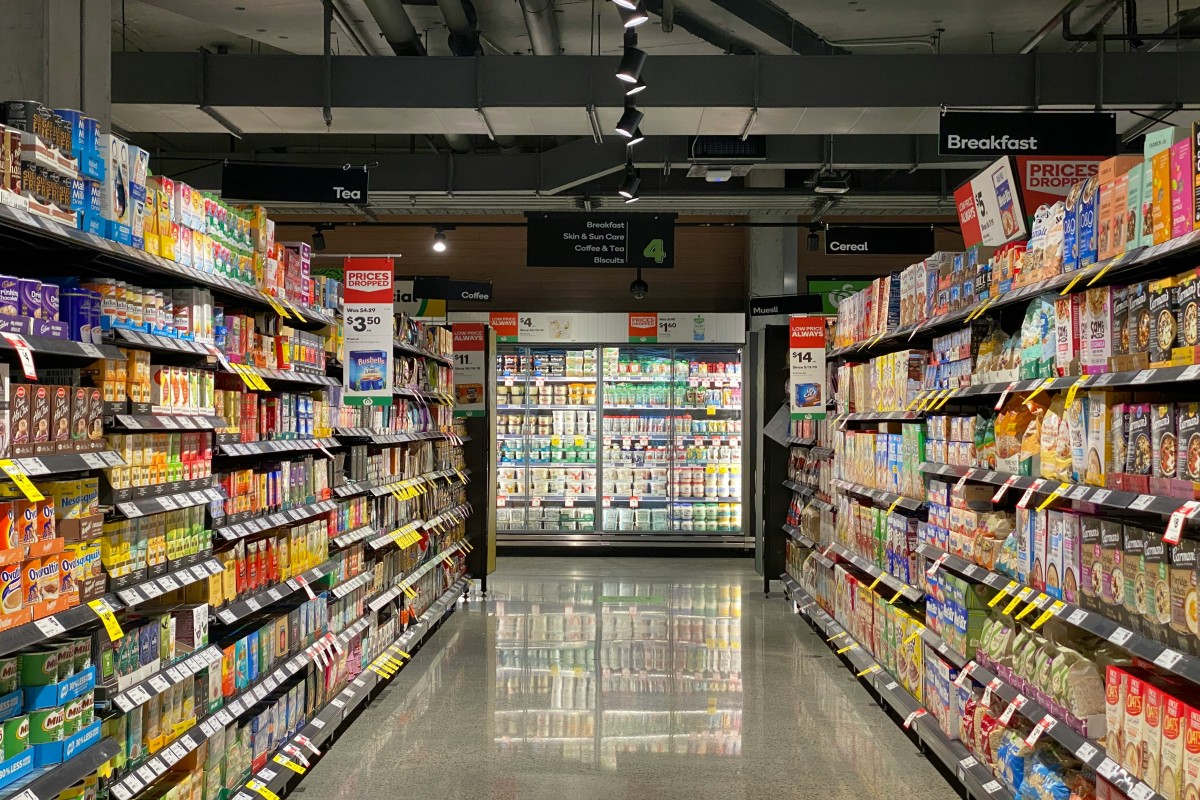
Key Takeaways
- Learn essential shopping vocabulary like price, receipt, refund, and discount to handle any store situation.
- Master supermarket language to easily find items, ask for help, and understand packaging or prices.
- Use clothing store phrases to talk about sizes, colors, and fitting rooms with confidence.
- Understand online shopping terms such as checkout, shipping, and tracking number for smooth digital purchases.
- Practice polite expressions like “Excuse me, could you help me?” to make your shopping experience more natural and friendly.
Shopping is an almost everyday routine. Whether you’re at a supermarket in London or browsing clothes at a New York boutique, you’ll encounter English words and phrases that may feel confusing at first. For English learners, learning English vocabulary for shopping, is especially important because it’s practical, useful in daily life, and often comes up in conversations while traveling, studying, or living abroad.
In this guide, we’ll explore the essential shopping vocabulary you need to know, complete with detailed examples, phrases for different situations, and real-life dialogues.
You’ll also find tables with common words and meanings to make learning easier. By the end of this article, you’ll be more confident when speaking English while shopping, whether you’re buying groceries, clothes, or products online.
1. General Shopping Vocabulary
When you go shopping, there are some words and phrases that you will hear everywhere, no matter the type of store. These are the foundation of shopping vocabulary. They help you ask questions, understand prices, talk with shop assistants, and describe what you need.
Imagine walking into a store: you see a price tag, the cashier greets you, and after you buy something, you receive a receipt. All of these words are part of general shopping vocabulary. Without them, even basic shopping conversations can be difficult.
Here are the most common shopping words you’ll encounter:
| Word / Phrase | Meaning | Example Sentence |
| Customer | The person buying something | The customer asked for a discount. |
| Shop / Store | A place where goods are sold | This is my favorite clothing store. |
| Price | The amount of money something costs | What’s the price of this bag? |
| Sale | A special discount period | These shoes are on sale this week. |
| Discount | A reduction in price | Do you offer student discounts? |
| Cashier | The person at the checkout | I paid the cashier in cash. |
| Receipt | Proof of purchase | Keep the receipt in case you want to return it. |
| Refund | Money returned when you return an item | I got a refund for the broken blender. |
| Exchange | To swap one item for another | Can I exchange this shirt for a bigger size? |
| Shopping cart / Basket | Container to carry items while shopping | I need a shopping cart for my groceries. |
2. Vocabulary for Supermarkets & Grocery Stores
Supermarkets are often the first places where learners practice English in real life. They are full of different sections, labels, and products, and it’s easy to feel lost if you don’t know the right words.
If you don’t know how to say “dairy section,” you might struggle to ask where the milk is.
Knowing supermarket vocabulary helps you:
- Ask for help politely.
- Find the right aisle or section quickly.
- Understand packaging, prices, and quantities.
- Talk about food and groceries with others.
Common sections in a supermarket
| Section | Items You Can Find |
| Produce | Fruits, vegetables |
| Dairy | Milk, cheese, yogurt |
| Bakery | Bread, cakes, pastries |
| Meat & Seafood | Beef, chicken, fish |
| Frozen Foods | Ice cream, frozen vegetables |
| Beverages | Juice, soda, bottled water |
| Household Items | Soap, detergent, cleaning supplies |
Useful phrases at the supermarket
| Phrase | Usage Example |
| “Where can I find the … ?” | Where can I find the dairy section? |
| “How much is this per kilo?” | How much are the apples per kilo? |
| “Do you have this in a smaller package?” | Do you have this rice in a smaller bag? |
| “Can I pay by card?” | Can I pay by debit card? |
3. Vocabulary for Clothing & Fashion Stores
To buy clothes you need to communicate your size, preferred color, and style. Clothing stores often have specific vocabulary that can be tricky for learners. For example, if you don’t know the word “fitting room,” you won’t know where to try on clothes.
Clothing shopping is also highly interactive, you’ll likely need to ask the shop assistant for help, explain what you’re looking for, or decide whether you want to buy something. Mastering clothing vocabulary ensures that you can shop with confidence.
| Word / Phrase | Meaning | Example |
| Size | The measurement of clothing (S, M, L, XL) | Do you have this in size medium? |
| Fitting room / Changing room | Place to try clothes on | The fitting rooms are at the back. |
| Brand | The label or company name | This is a famous brand. |
| Price tag | Label showing the price | The price tag says $40. |
| On sale | Sold at a lower price | These jeans are on sale today. |
| Designer clothes | Expensive branded clothes | She only buys designer clothes. |
Phrases for clothing stores
| Phrase | Example |
| “Can I try this on?” | Asking to use the fitting room |
| “Do you have this in another color?” | Looking for variety |
| “Does this come in a larger size?” | Asking about size |
| “It’s too tight/loose.” | Describing fit |
| “I’ll take it.” | When you decide to buy |
4. Vocabulary for Online Shopping
Online shopping has changed the way people buy products worldwide. Instead of speaking to a cashier, you’re clicking buttons like “Add to cart” or “Checkout.” This means you need to learn different vocabulary for the digital world of shopping.
This vocabulary is especially important if you live in an English-speaking country, because many stores send email confirmations, shipping updates, and receipts in English.
Here’s what you need to know:
| Word / Phrase | Meaning | Example |
| Add to cart | Put an item in your online basket | I added a phone case to my cart. |
| Checkout | The final step of buying | I’m ready to checkout. |
| Shipping | Delivery of goods | Shipping takes 3–5 business days. |
| Free shipping | No delivery fee | Orders over $50 come with free shipping. |
| Tracking number | Code to follow your order’s status | I received a tracking number by email. |
| Out of stock | Not available | This product is out of stock. |
| Wishlist | A list of items you want to buy later | I added that jacket to my wishlist. |
5. Polite Phrases for Shopping
Politeness is very important in English-speaking cultures, especially in customer service situations. Using polite expressions shows respect and makes interactions smoother. Instead of saying “How much?” in a sharp tone, asking “Could you tell me how much this costs, please?” is friendlier and more natural.
Here are some useful polite expressions that you can use while shopping:
| Polite Expression | When to Use |
| “Excuse me, could you help me?” | Asking for assistance |
| “Could you tell me how much this costs?” | Asking for a price |
| “Do you have this in stock?” | Checking availability |
| “I’d like to return this, please.” | Returning an item |
| “Can I have a bag, please?” | Asking for a shopping bag |
| “Thank you, I’m just looking.” | Politely declining help |
6. Example Dialogue in a Clothing Store
Learning words is one thing, but hearing them in a real conversation helps you understand how they are actually used. Here’s a sample dialogue in a clothing store that puts many of the above phrases into practice:
Shop Assistant: Hello, how can I help you?
You: Hi, I’m looking for a pair of jeans.
Shop Assistant: What size are you?
You: Medium, please. Do you have these in blue?
Shop Assistant: Yes, here you go. Would you like to try them on?
You: Yes, where are the fitting rooms?
Shop Assistant: They’re over there.
You: Thanks. (After trying) They’re a little tight. Do you have a larger size?
Shop Assistant: Sure, here’s a large.
You: Perfect! I’ll take them.
7. Tips for Mastering English Vocabulary for Shopping
Memorizing words is not enough. You need to actively practice shopping vocabulary so it becomes natural. Here are some strategies:
- Practice dialogues – Role-play shopping conversations with a partner or teacher.
- Use flashcards – Write the word on one side and the meaning/example on the other.
- Watch videos – Observe how native speakers shop in English (YouTube, TV shows, movies).
- Go shopping in English – If possible, try speaking English when shopping abroad or even online.
- Keep a shopping journal – Write down new words you notice on receipts, price tags, or websites.
Conclusion
Shopping is an everyday activity, but it becomes much easier when you have the right English vocabulary. From supermarkets to clothing stores to online shopping, the words and phrases in this guide will help you ask questions, understand answers, and shop with confidence.
👉 Keep practicing, try using these phrases in real life, and soon you’ll master the art of shopping in English. Visit ThoughtinEng, for more similar blogs. Here I actively post tips and tricks that will help you learn English quickly.
Frequently Asked Questions
What’s the difference between “refund” and “exchange”?
A refund is when you return an item and get your money back. An exchange is when you return an item and take another item instead (for example, a different size).
Is “shop” the same as “store”?
In British English, “shop” is more common. In American English, people usually say “store.” Both mean the same thing.
How do I ask for help politely in a store?
You can say: “Excuse me, could you help me?” or “Could you tell me where the fitting room is, please?”
What do I say if I don’t want help from a shop assistant?
You can politely say: “Thank you, I’m just looking.”
What’s the difference between “sale” and “discount”?
A sale usually means a temporary event where many items are cheaper (like a summer sale). A discount means a specific reduction in price (like a student discount or 10% off).




Leave a Reply